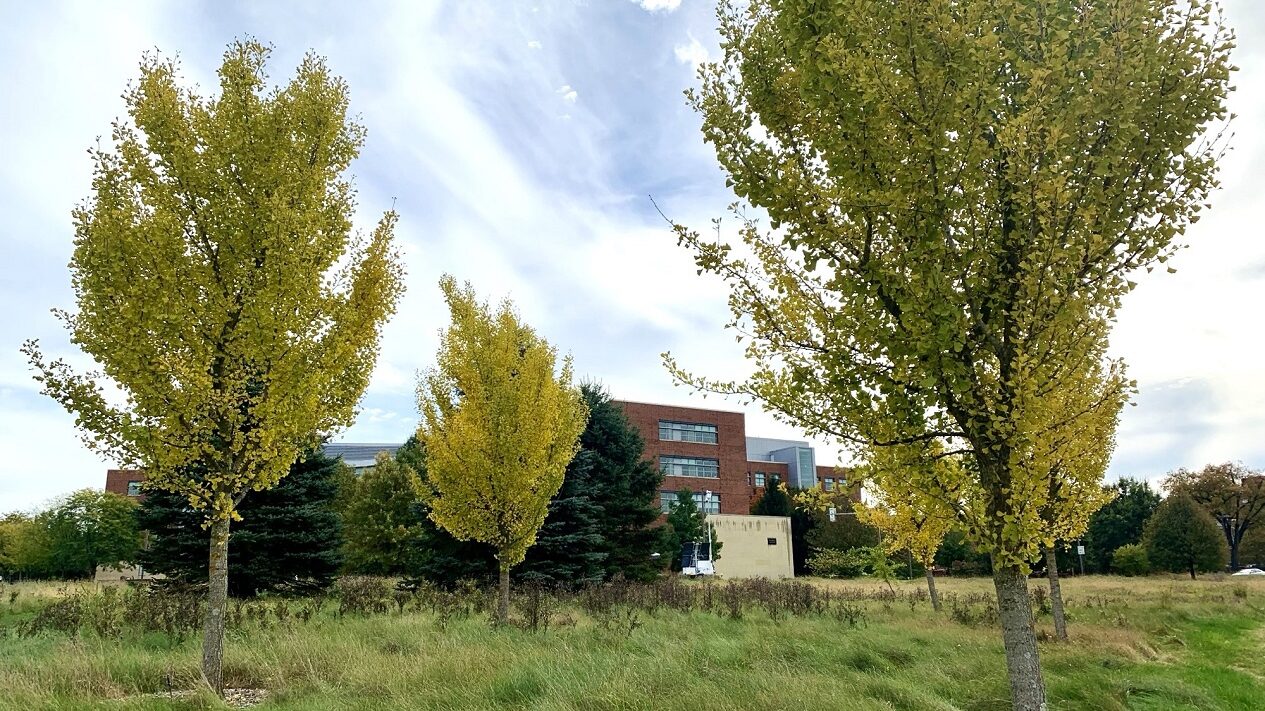Maidenhair trees are showing off their fall outfits at the Arboretum. Our collection is currently transforming from green to golden yellow around our Marsh Meadow garden landscape. Just look straight through our main fountain to our Marsh Meadow boardwalk! You will find 13 specimens in total, including the species, Ginkgo biloba, as well as four cultivars: Ginkgo biloba ‘Autumn Gold,’ Ginkgo biloba ‘Mariken,’ Ginkgo biloba ‘Woodstock’ Emperor™, and Ginkgo biloba ‘Snow Cloud.’ They are adaptable trees that are extremely well-suited for urban environments, tolerating air pollution, heat, and saline conditions. G. biloba has a wide USDA hardiness zone range of 3 to 8.
The distinctive, two-lobed, fan-shaped leaves are what give Ginkgo biloba their common name, Maidenhair. ‘Autumn Gold’ is smaller than the species, reaching a height of 40 to 50 feet tall. ‘Mariken’ is a dwarf Ginkgo that is currently growing in our container displays. This cultivar will reach a maximum of 3 feet tall and will form a somewhat weeping and low spreading habit as it slowly matures. ‘Woodstock’ Emperor™ can grow up to 50 feet tall and will eventually develop into a broadly oval-shaped tree.

The common maidenhair tree, Ginkgo biloba, can grow 50 to 80 feet tall. It forms deep roots that help the tree withstand intense winds and damage from snow, another quality making it a great urban or street tree selection. This species prefers full sun and is highly disease tolerant. The oldest living Ginkgo biloba is in Western China and is estimated to be between 3,500 and 4,000 years old.
A true living fossil, Ginkgo biloba dates back to the Middle Jurassic period, which occurred almost 300 million years ago. Like cycads and conifers, two other ancient plant groups, G. biloba is also a gymnosperm. Gymnosperms are plants with naked seeds. Therefore, its seed is exposed, unprotected by an ovary or fruit.
Ginkgo trees are dioecious (trees are either male or female) and reproduction occurs by wind pollination. Recent studies have identified the ability of Ginkgo trees to change sexes. This is a rare, evolutionary phenomenon and its purpose is not entirely clear. This trait has been noticed more so on male trees that produce a female branch (a branch that is growing seeds). The tree will produce pollen that will be used to self-fertilize as well has pollinate any nearby female trees.
In just a few weeks, the Maidenhair leaves will begin drifting to the ground, blanketing the Arboretum in gold, so be sure to witness it before winter begins!


